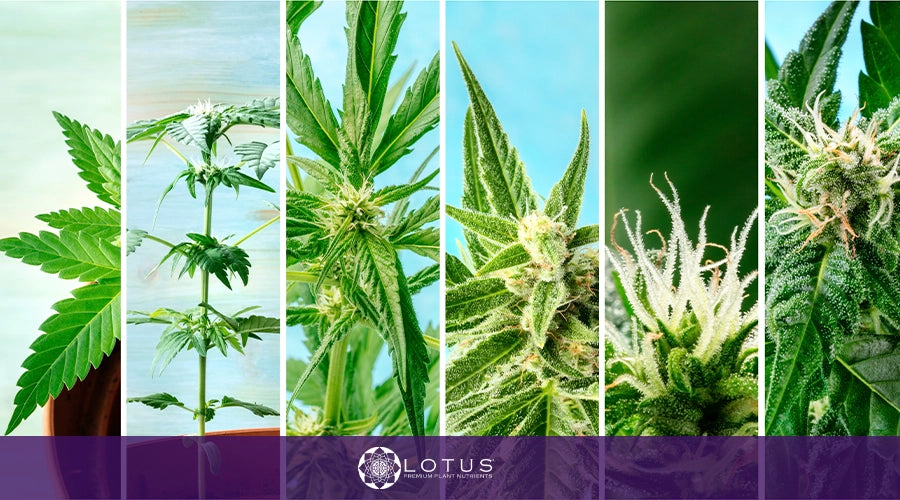
Cannabis Growing Guide
The Science of Cannabis Cultivation: Understanding the Plant's Needs
Cannabis, also known as marijuana, is a psychoactive drug derived from the Cannabis sativa plant. It has been used for medicinal and recreational purposes for centuries. In recent years, there has been a growing interest in growing cannabis at home for personal use. In this guide, we will provide an overview of the basics of cannabis growing, including the equipment needed, the different stages of growth, and tips for successful cultivation.
Equipment needed:
Before you start growing cannabis, you will need to acquire the necessary equipment. The most basic setup consists of a grow tent or grow box, grow lights, a ventilation system, and a growing medium. Grow tents and boxes come in a variety of sizes and are designed to provide an enclosed space for cannabis plants to grow. Grow lights are essential for providing the necessary spectrum of light for plants to photosynthesize. Ventilation systems are crucial for maintaining proper temperature and humidity levels and for providing fresh air to plants. The growing medium is the substance in which the plants will grow, and can be soil, coco coir, or a hydroponic system.

Stages of growth:
Cannabis plants go through several stages of growth, each with its own unique needs. The first stage is the seedling stage, which lasts for the first two to three weeks after germination. During this stage, the plants require high humidity and relatively low light levels. The second stage is the vegetative stage, which lasts from three to eight weeks. During this stage, the plants require more light and nutrients to support their growth. The final stage is the flowering stage, which lasts from six to twelve weeks, depending on the strain. During this stage, the plants require less nitrogen and more phosphorus and potassium to support the development of buds.
From Seed to Harvest: The Stages of Cannabis Growth
Tips for successful cultivation:
Start with high-quality seeds or clones: The success of your cannabis growing project will depend on the quality of the seeds or clones you start with. Make sure to acquire them from a reputable source.
Provide the right amount of light:
Cannabis plants require between 18-24 hours of light during the vegetative stage and 12 hours of light during the flowering stage.
Maintain proper temperature and humidity levels:
Cannabis plants thrive in temperatures between 68-77°F (20-25°C) and require humidity levels between 40-60%.
Monitor and adjust nutrient levels:
Cannabis plants require a balance of nutrients, including nitrogen, phosphorus, and potassium, as well as trace minerals. Be sure to monitor the nutrient levels in your growing medium and adjust as necessary.
Prune and train your plants:
Pruning and training your plants can help promote better growth and higher yields. Techniques such as topping, low-stress training, and defoliation can help shape the plants and increase their exposure to light.
Keep a clean environment:
Cannabis plants are susceptible to pests and diseases, so it is important to keep a clean growing environment. Regularly clean your equipment and monitor your plants for signs of damage or infestation.
Choose the right strain:
There are many different strains of cannabis, each with its own unique characteristics and growing requirements. Research the different strains and choose one that is well-suited to your growing conditions and preferences.
Maximizing Yields: Tips and Techniques for Increasing Your Harvest
Use high-quality water:
Cannabis plants are sensitive to water quality, so it is important to use clean, high-quality water. Consider using a reverse osmosis (RO) filter to remove impurities from your water.
Monitor pH levels:
The pH level of your growing medium can affect the plant's ability to absorb nutrients. Cannabis plants prefer a pH range between 6.0 and 7.0. Use a pH meter to regularly monitor the pH level and adjust as necessary.
Consider using organic growing methods:
Organic growing methods can help improve the quality and flavor of your cannabis and can be better for the environment. Consider using organic fertilizers and pest control methods.
Be patient:
Cannabis plants require time to grow and develop. Be patient and don't rush the process. Rushing can result in lower quality and lower yields.
Harvest at the right time:
Harvesting your cannabis at the right time is crucial for achieving the desired potency and flavor. Monitor the trichomes (tiny, crystal-like structures on the buds) to determine when the plant is ready for harvest.
Use proper air circulation:
Good air circulation is important to prevent mold, mildew, and other issues that can arise from stagnant air. Consider using a fan to help circulate air within the grow space.
Don't overwater your plants:
Overwatering can lead to root rot and other issues. Cannabis plants prefer a slightly dry environment, so it's important to let the soil or growing medium dry out between waterings.
The Pros and Cons of Supplemental CO2 in Cannabis Cultivation
Consider using supplemental CO2:
Adding CO2 to the grow space can help improve plant growth and yields. However, it's important to monitor the levels carefully and not exceed recommended levels.
The Importance of Keeping Good Records in Cannabis Cultivation
Keep a grow journal:
Keeping a detailed record of your growing process can help you track your progress, identify areas for improvement, and replicate successful techniques in the future.
Getting Creative with Cannabis Companion Planting
Consider using companion planting:
Companion planting involves growing different plants together to promote healthy growth and deter pests. Some companion plants that are commonly used with cannabis include basil, marigolds, and peppermint.
Be mindful of your neighbors:
If you live in an area where cannabis cultivation is legal, be considerate of your neighbors and take steps to minimize any odors or other disturbances that may arise from your grow operation.
Growing cannabis can be a rewarding and fulfilling hobby, but it requires careful planning and attention to detail. With the right equipment, knowledge, and techniques, you can successfully cultivate your own cannabis plants at home. Remember to start with high-quality seeds or clones, provide the right amount of light, maintain proper temperature and humidity levels, monitor and adjust nutrient levels, prune and train your plants, and keep a clean environment. With these tips in mind, you can look forward to a bountiful harvest of high-quality cannabis.
